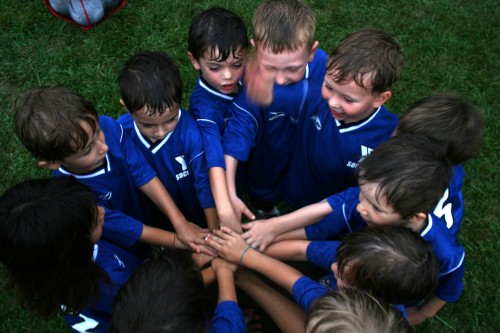 As a parent, it is great to see your child becoming active, joining sports teams and enjoying themselves whilst getting exercise.
As a parent, it is great to see your child becoming active, joining sports teams and enjoying themselves whilst getting exercise.
The range and breadth of sports and activities available for young people has never been greater, but the risk of injury holding them back is also significant.
Regardless of the level at which children and young people are participating – whether they are just taking part for fun, or they have serious ambitions to reach the highest level – their enjoyment or competitiveness can be hampered by injuries.
Some injures are relatively obvious and easily treated, these include bumps and bruises during sport.
However, there are some common injuries that are misunderstood, too commonly ignored or left untreated which affect youth. ‘Growing pains’, for example, is such an over-used phrase that it seems like a non-specific, or even psychological term.
Growing pains can be amplified due to sporting activity, and left untreated, can result in irreversible injury. Footballer Steven Gerrard famously suffered from growing pains in the early part of his career, which caused significant back and groin problems.
Here we outline two of the more common types of ‘growing pains’ found in children. If you suspect your child is suffering from growing pains, we strongly recommend you speak to a specialist who will be able to diagnose and treat the injury far more quickly than a GP could.
Osgood-Schlatter Syndrome
“Osgood-Schlatter” syndrome (often referred to as Osgood-Schlatter disease) is a common occurrence for teenagers in sport, typically affecting young people aged nine to 16. It affects a higher proportion of males, primarily around the ages of 13 or 14, and impacts females slightly earlier, around the ages of 11 or 12 years.
The symptoms of Osgood-Schlatter include pain and swelling in the knee, commonly below the kneecap/patella. Symptoms will likely spike following activity and fade during rest periods, and it can last for months, a year, or even until the child is finished growing.
So what causes it?
It is actually due to the fact that the child is still growing, and is accelerated with overuse of the bones and muscles in the knee. Basically, part of the shin bone (the Tibial Tuberosity, which is just below the kneecap) is still immature at this stage of life, and can become inflamed due to repeated contractions of the thigh muscle. This happens after constant sporting activity which doesn’t allow enough time to heal, and can be exacerbated by trauma to this particular bone, like a kick.
This condition is commonly treated with lots of rest – but a specialist might be able to treat it effectively without an enforced break, which we understand can be frustrating and disrupting.
Seeing a physiotherapist is vital if you suspect Osgood-Shlatter. A sports physiotherapist can recommend the adequate reduction of activity, or if absolutely necessary, advise a rest period. We often find that with appropriate manual therapy and some strengthening around the area, symptoms settle without the need for extensive rest periods.
Sever’s Disease
Another growing pain affecting the lower body during stages of development is Sever’s Disease, which causes pain and swelling in the heel of the foot.
 Also due to growth, this issue occurs because muscles, ligaments or tendons don’t grow as fast as the heel bone, a body part which tends to reach full adult size early in life. The muscles or tendons become stretched too tightly, and become swollen or tender. Activity, especially running and jumping, puts additional strain on the heel, increasing pain.
Also due to growth, this issue occurs because muscles, ligaments or tendons don’t grow as fast as the heel bone, a body part which tends to reach full adult size early in life. The muscles or tendons become stretched too tightly, and become swollen or tender. Activity, especially running and jumping, puts additional strain on the heel, increasing pain.
Also more common in males, they’re affected between ages 10 and 15. Girls tend to be diagnosed between ages eight and 13.
If your child is experiencing swelling, pain, tenderness or redness in their heel, they may have this condition. Symptoms will increase with activity, and children may end up limping or having trouble walking.
Contact a physiotherapist if you believe your child is suffering from this condition. Rest is typically recommended, but we can also offer stretches or exercises as a means to help heal. If necessary, our podiatry team can even measure for, and order, custom-made shoe inserts (orthotics) to help reduce pressure on the heel.
If you’re unsure about any musculoskeletal symptoms your child is demonstrating, don’t hesitate to contact a physiotherapist. Clinicians working at NSIC have loads of experience working in elite sport. When treating both of these conditions, communication between the physiotherapist and coach can really help to speed up the return to full training and competition.
Our team is more than happy to discuss symptoms over the phone, and help you understand potential causes and cures for any ailment you or your child may be experiencing. Contact us here.

